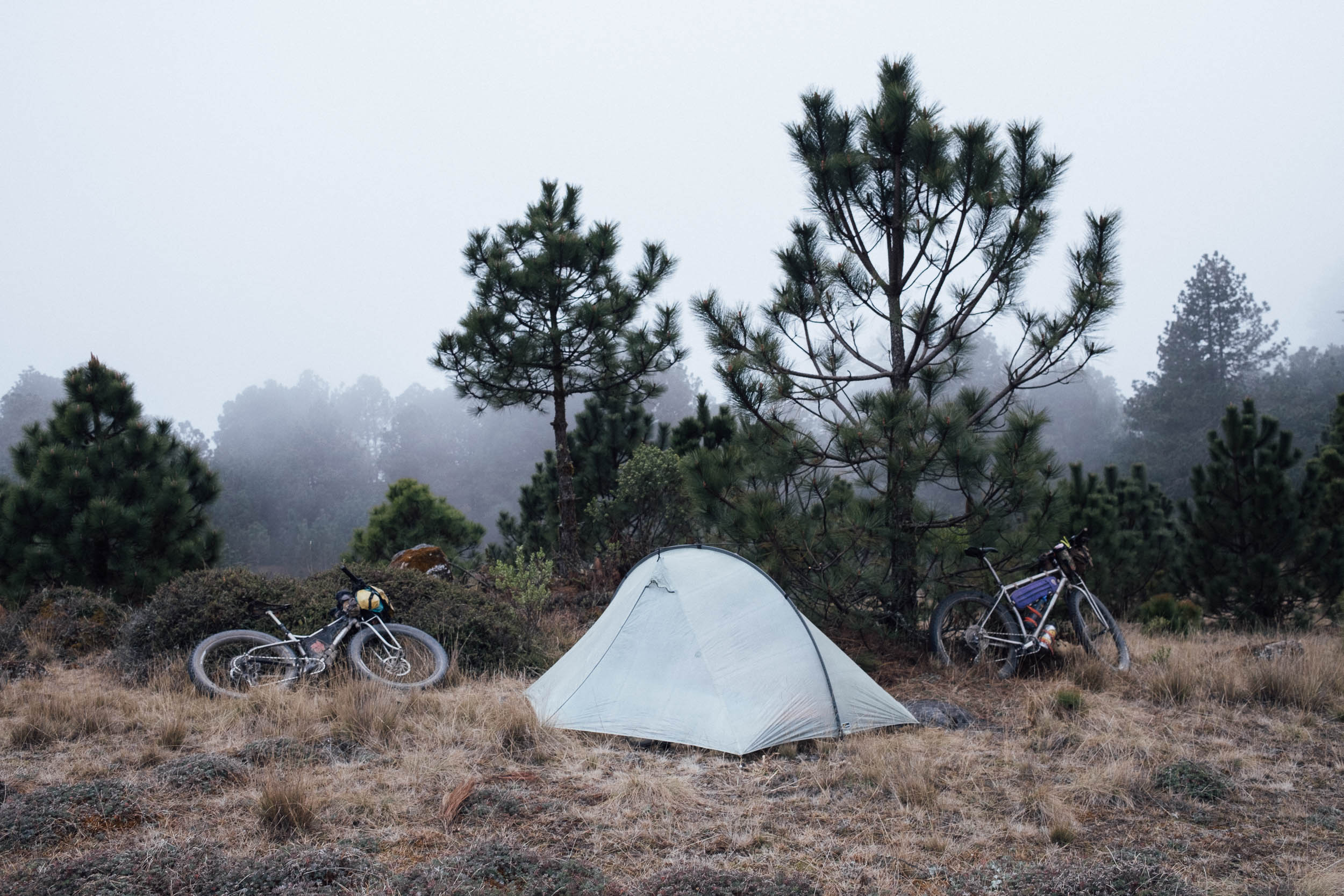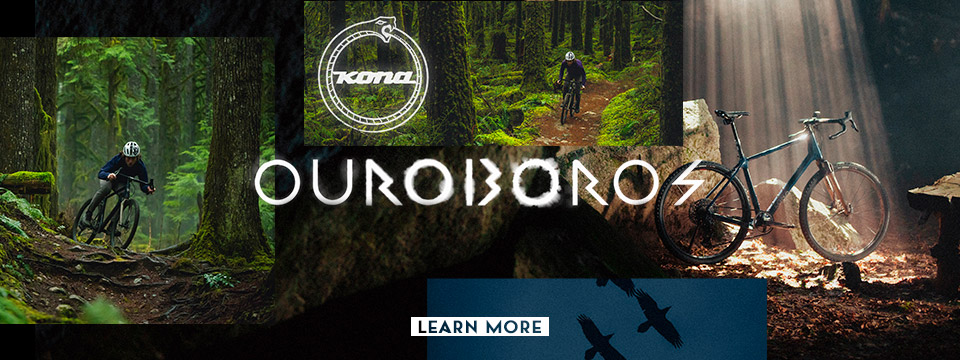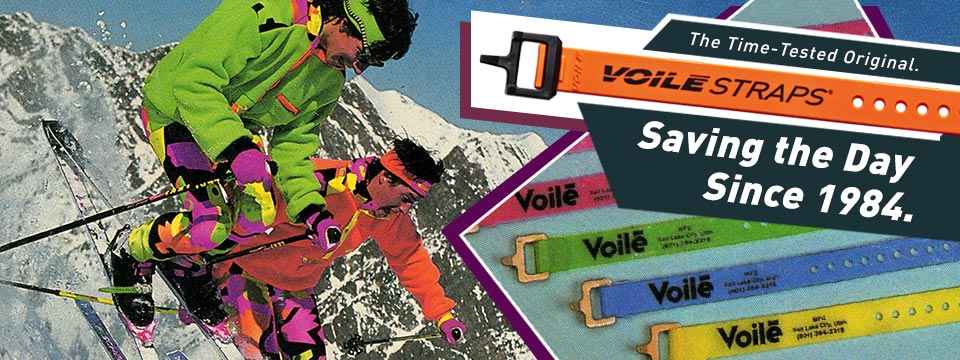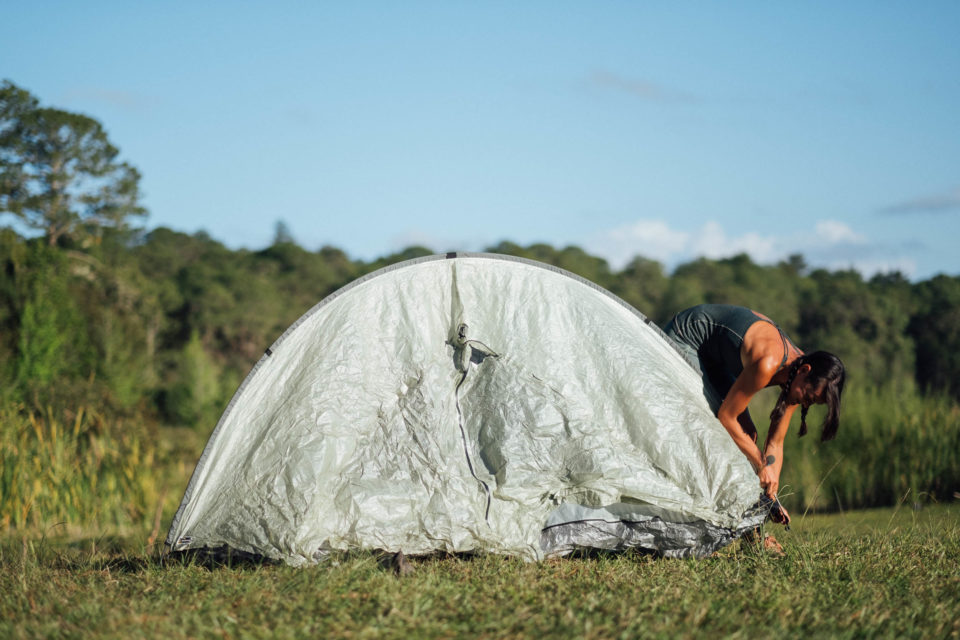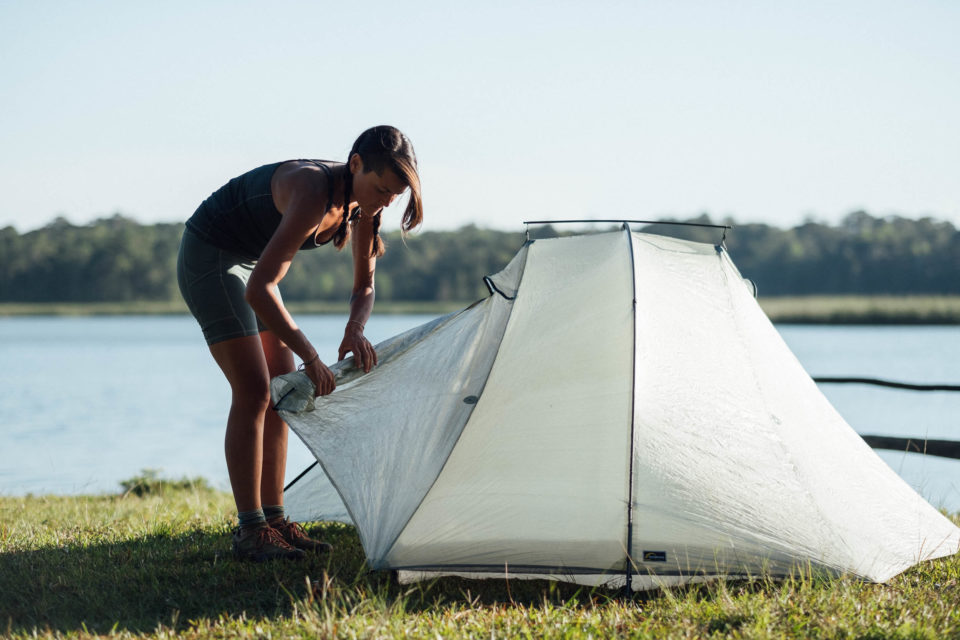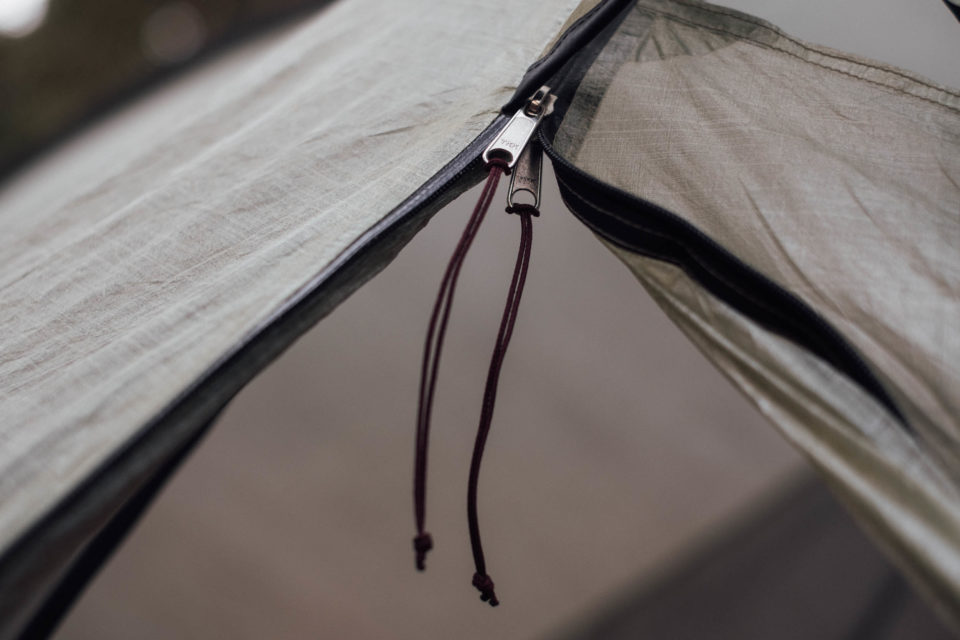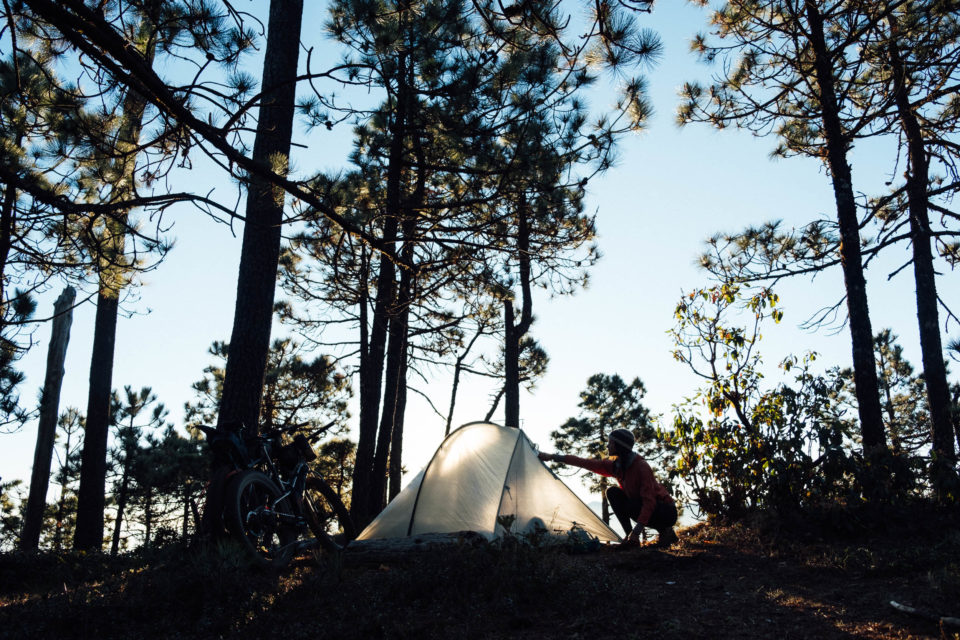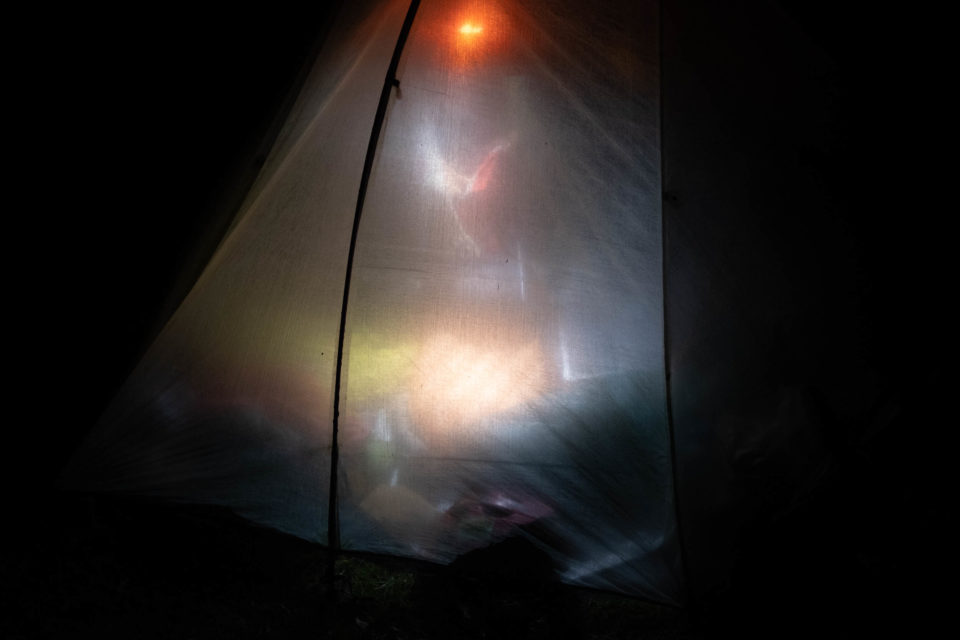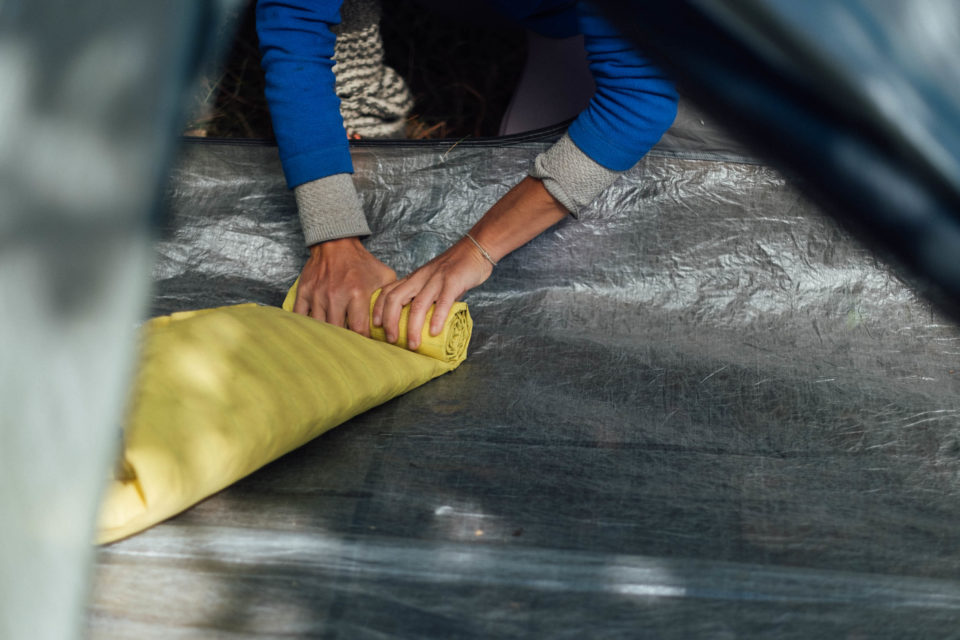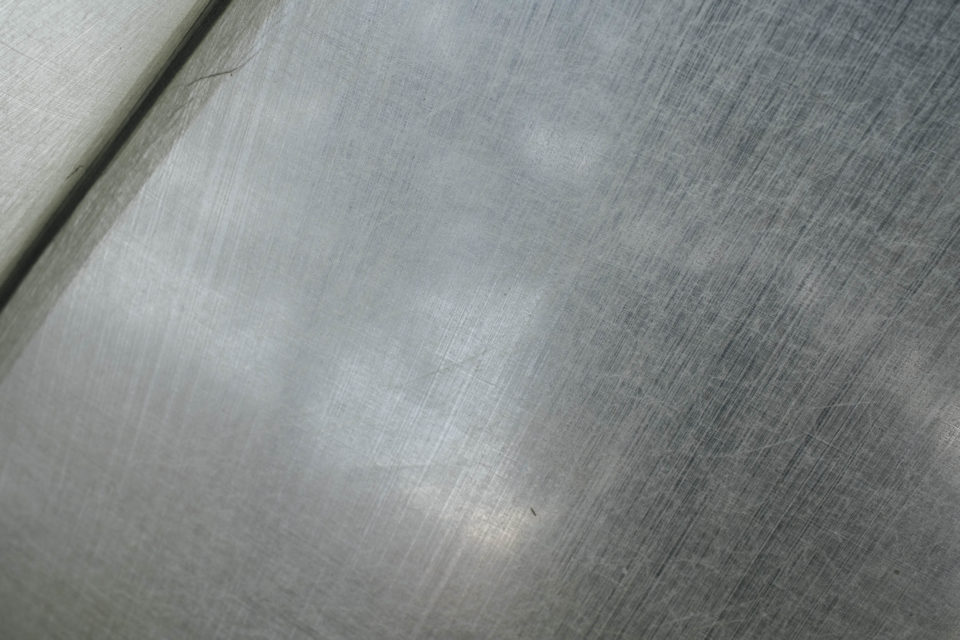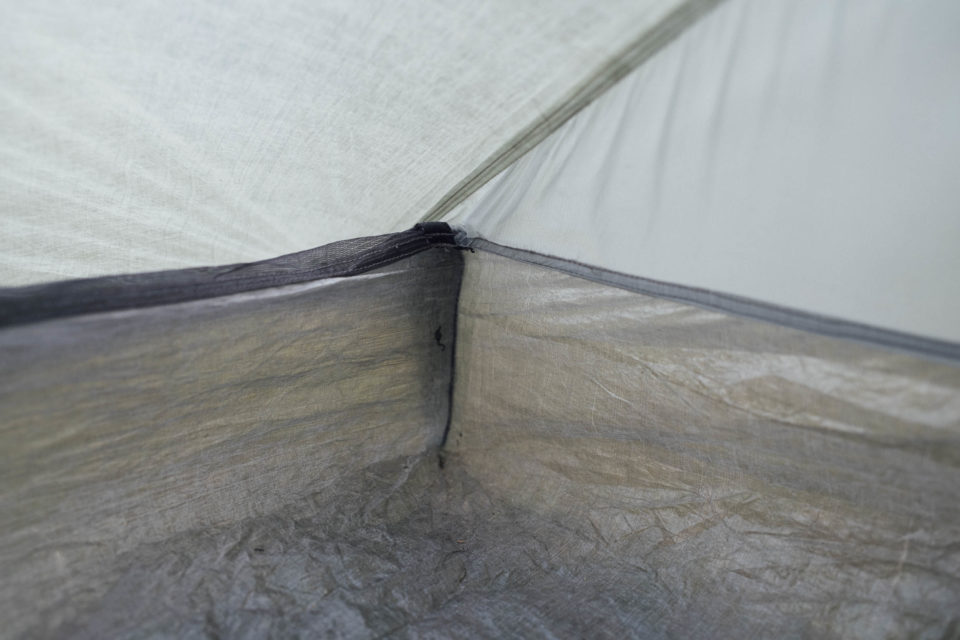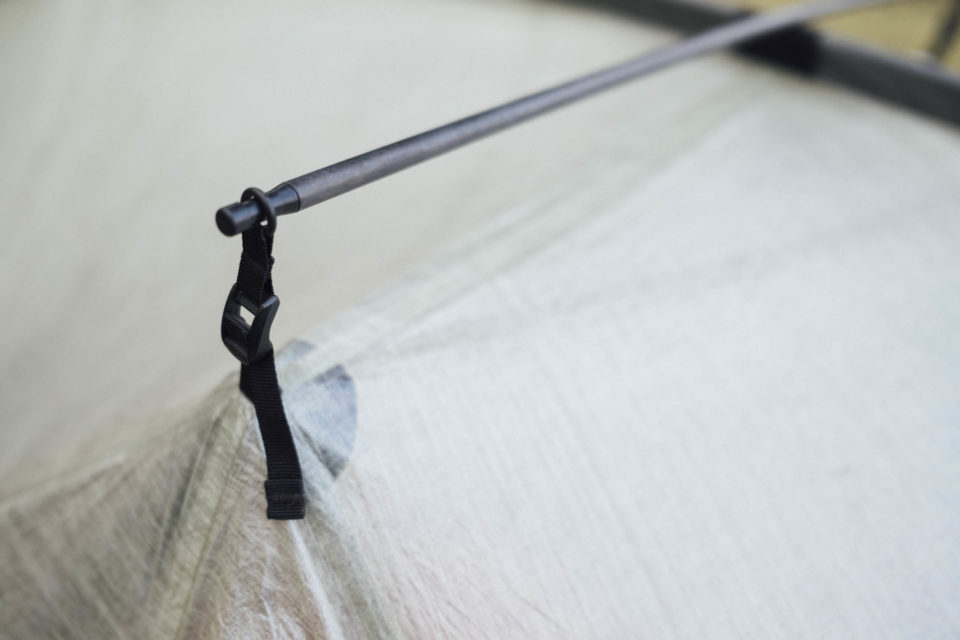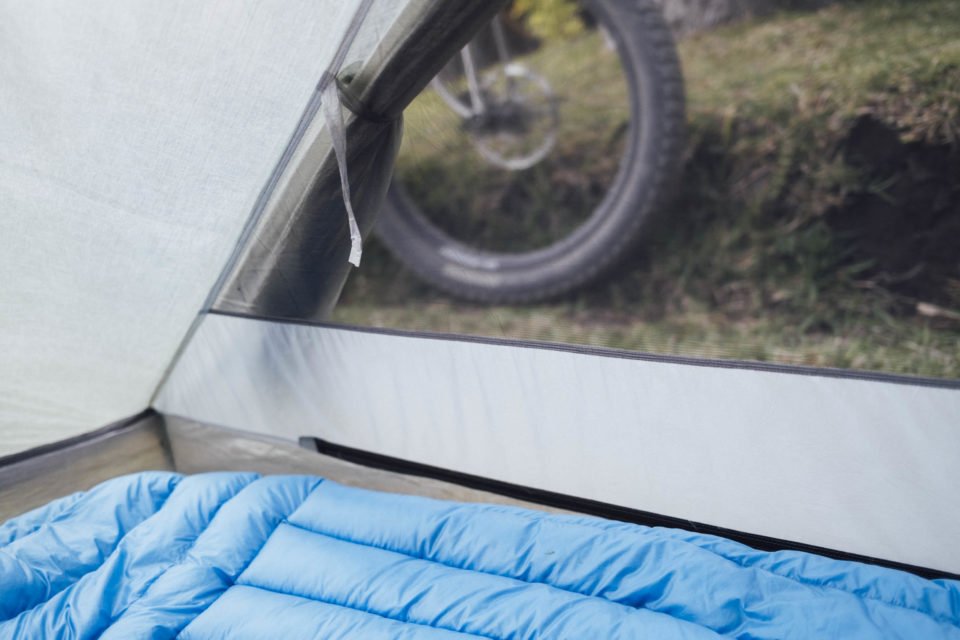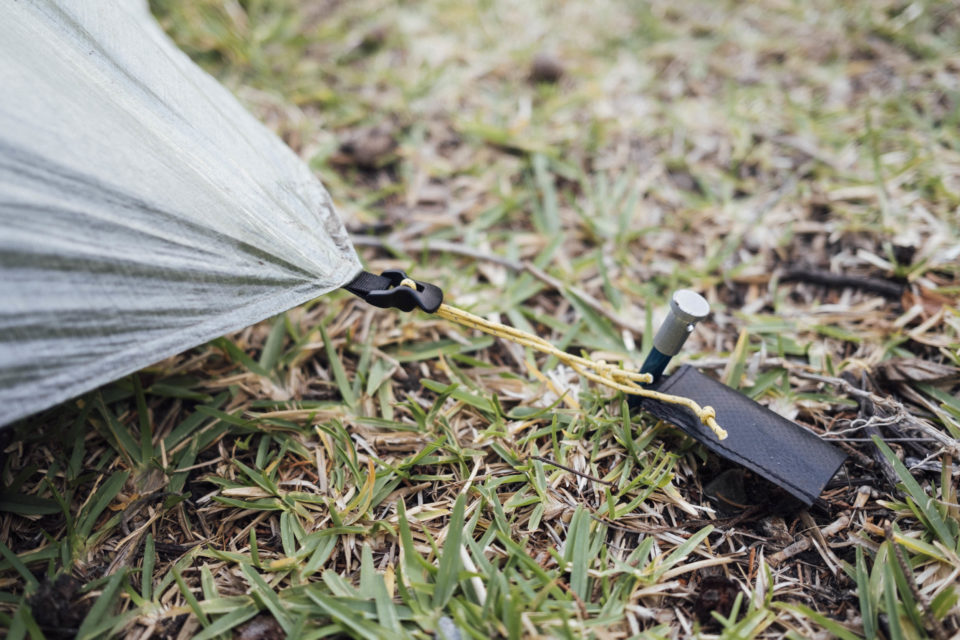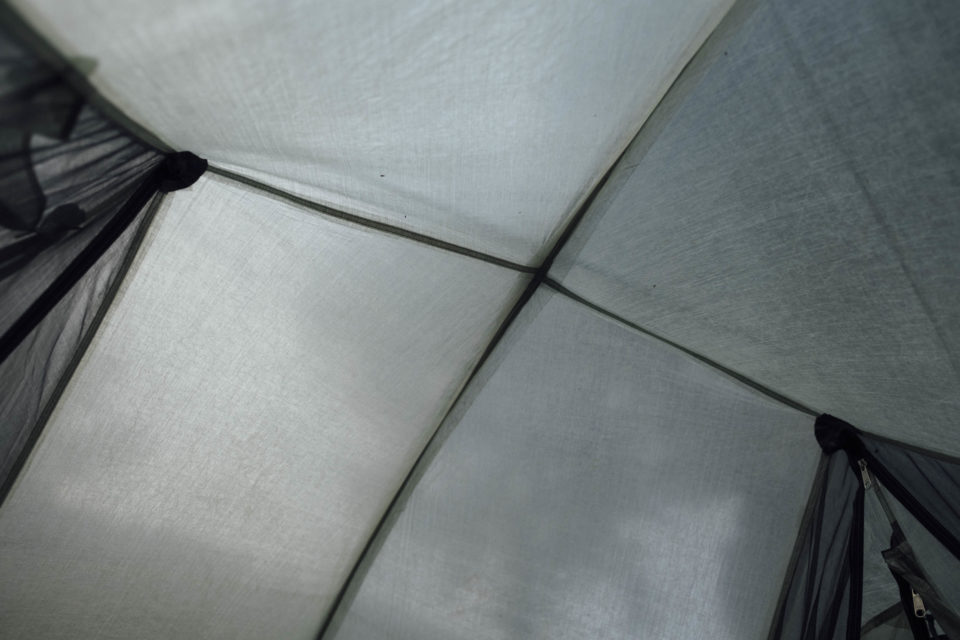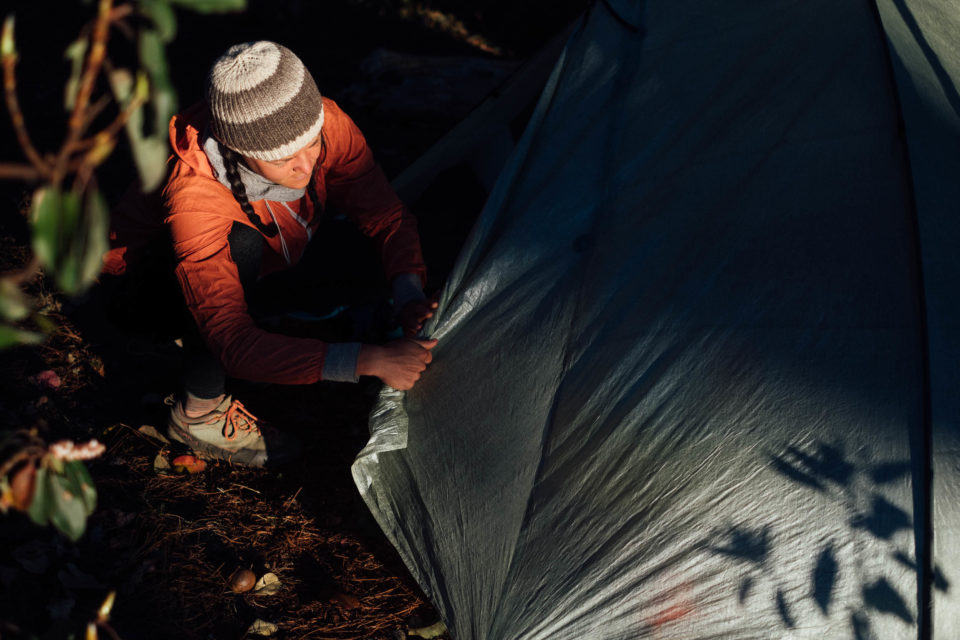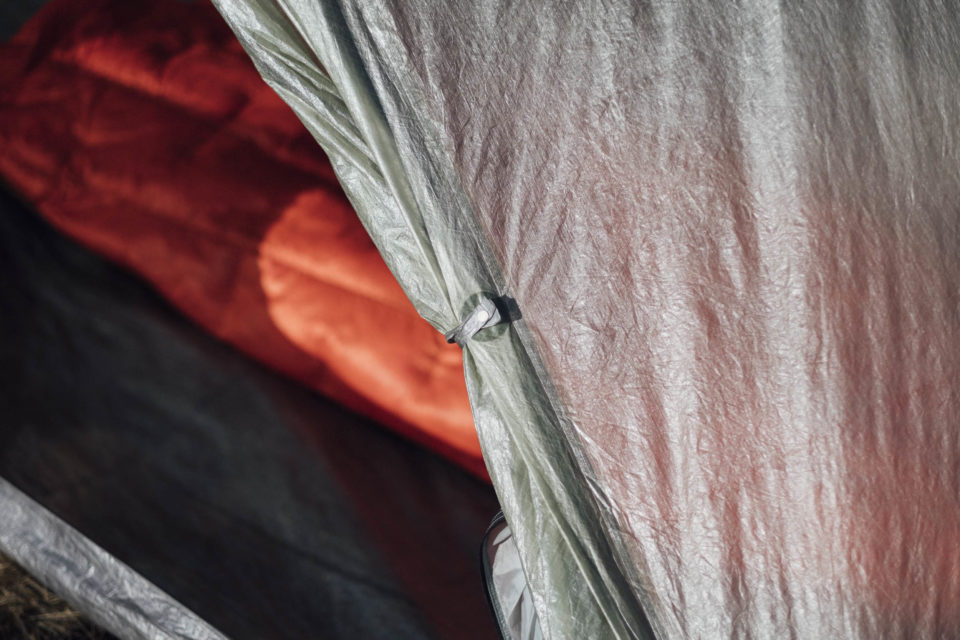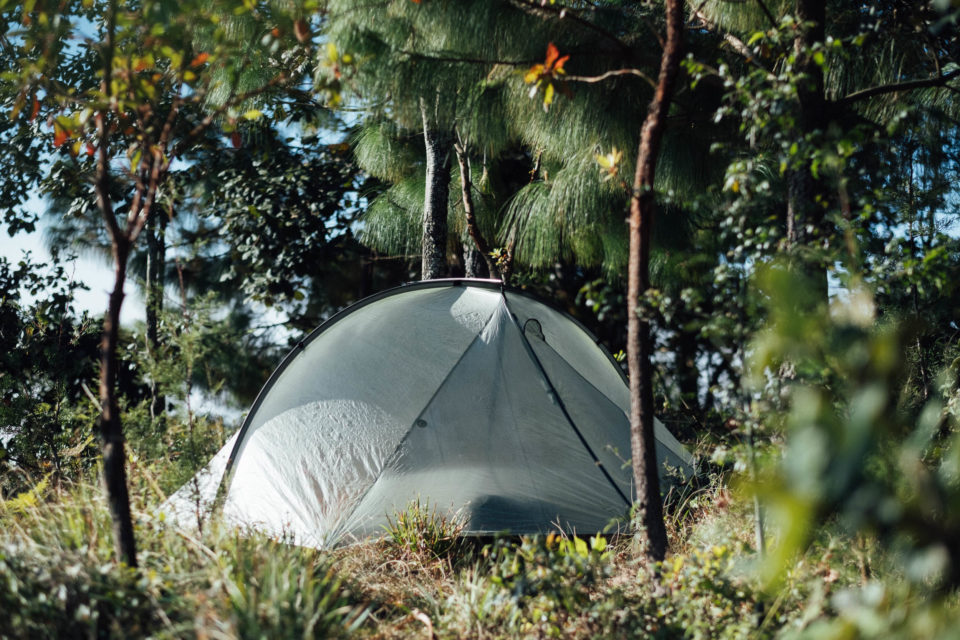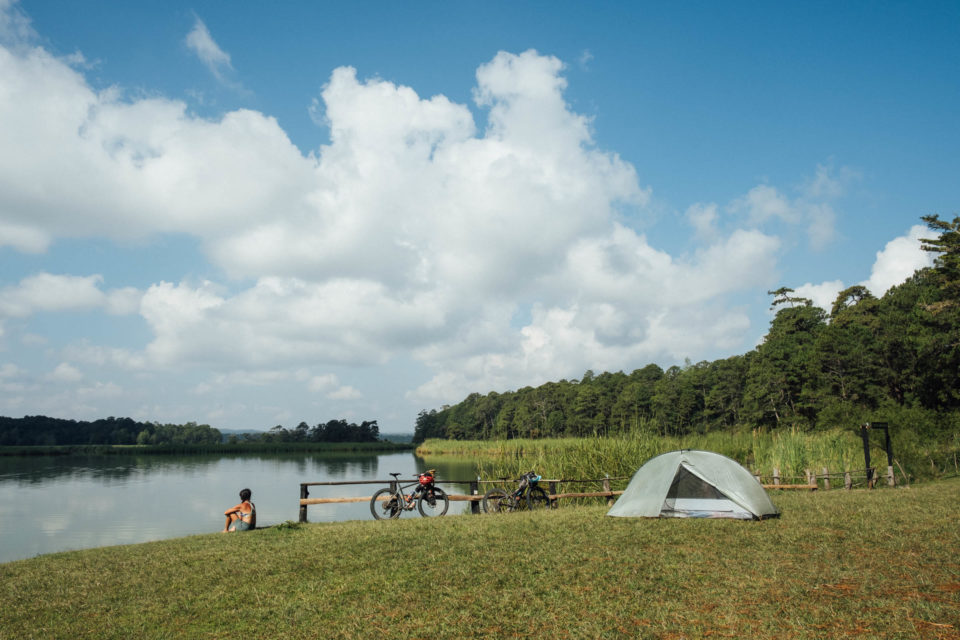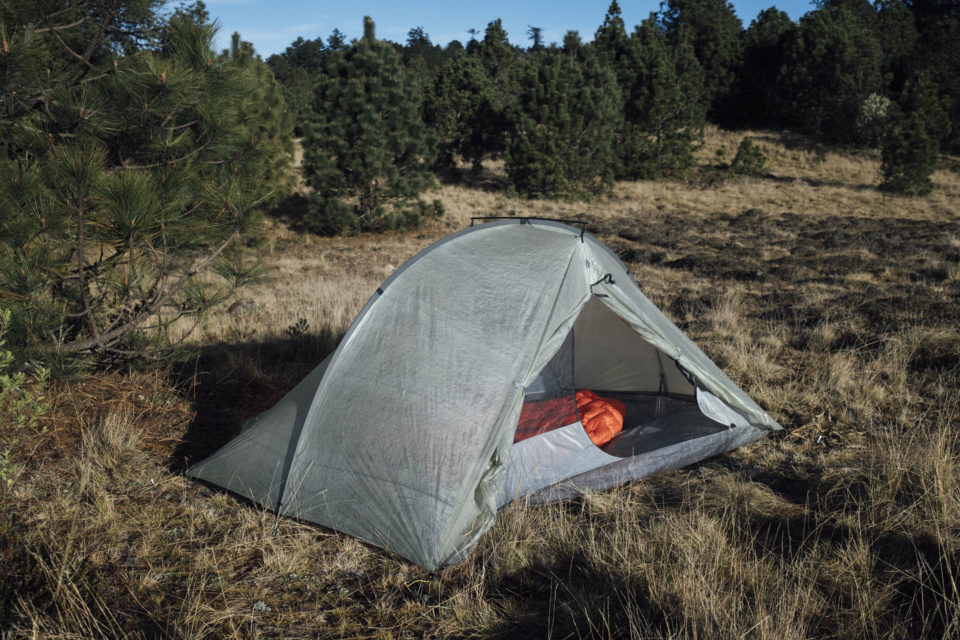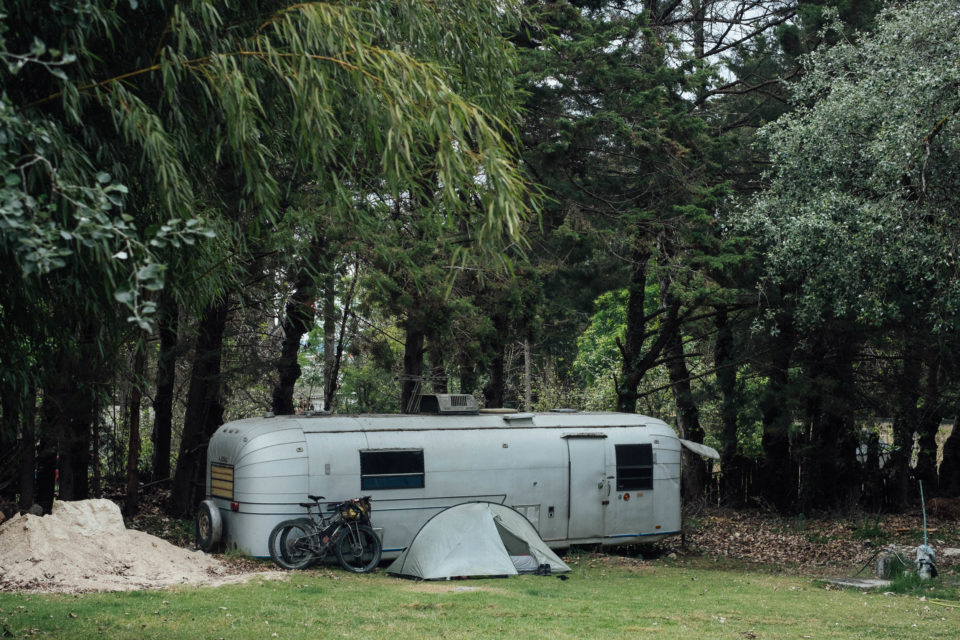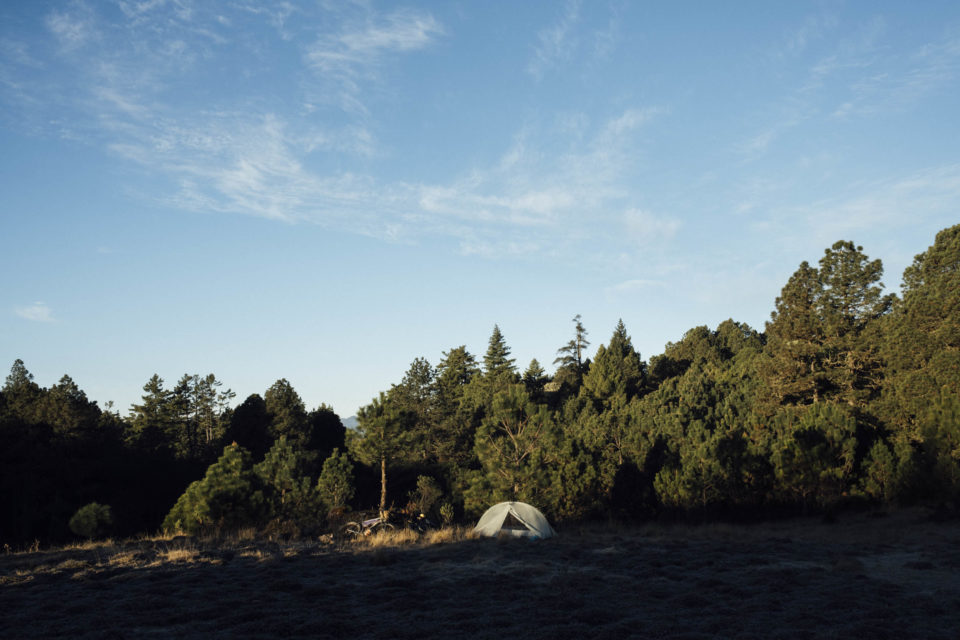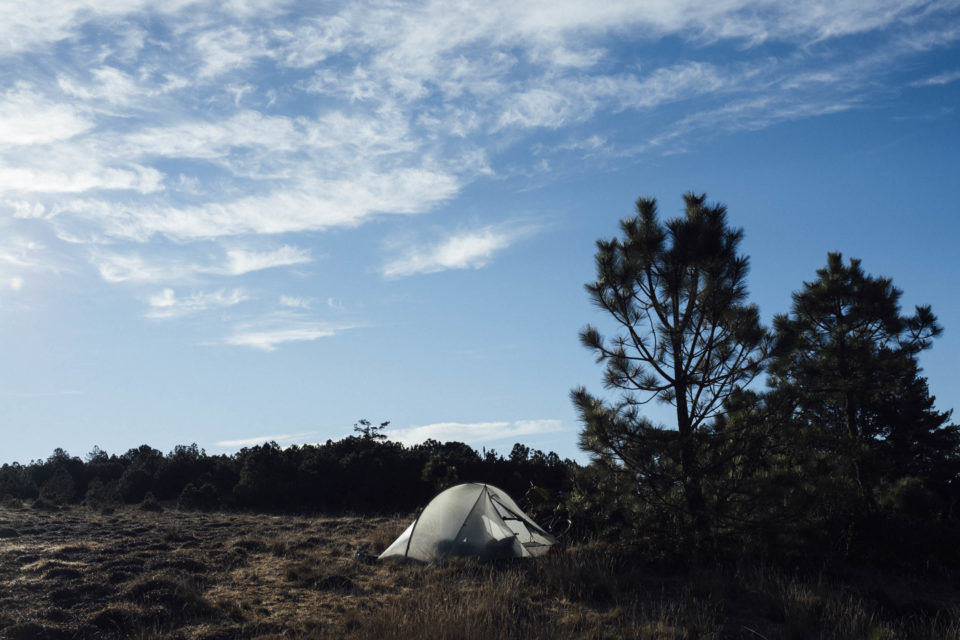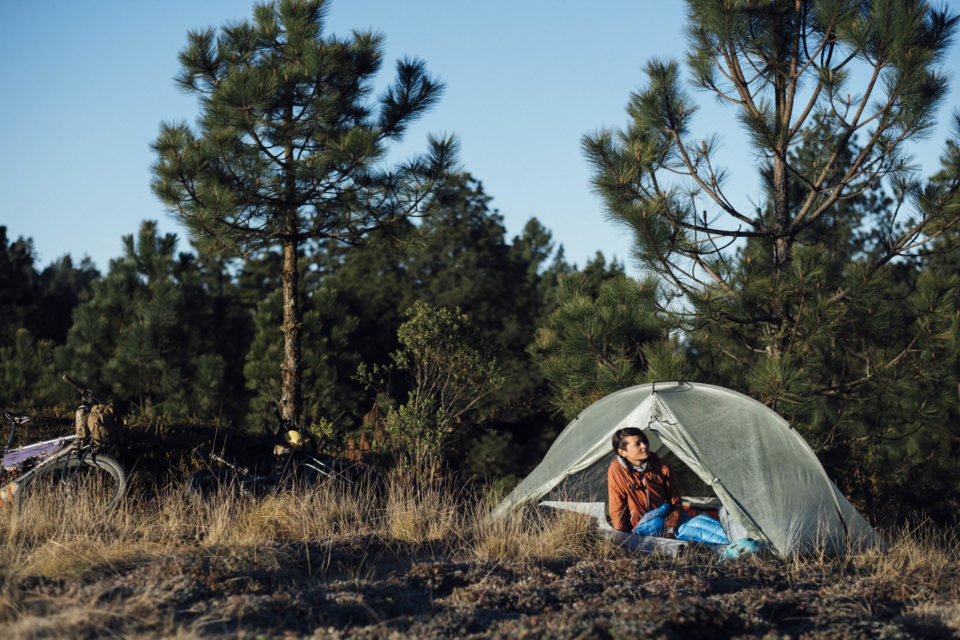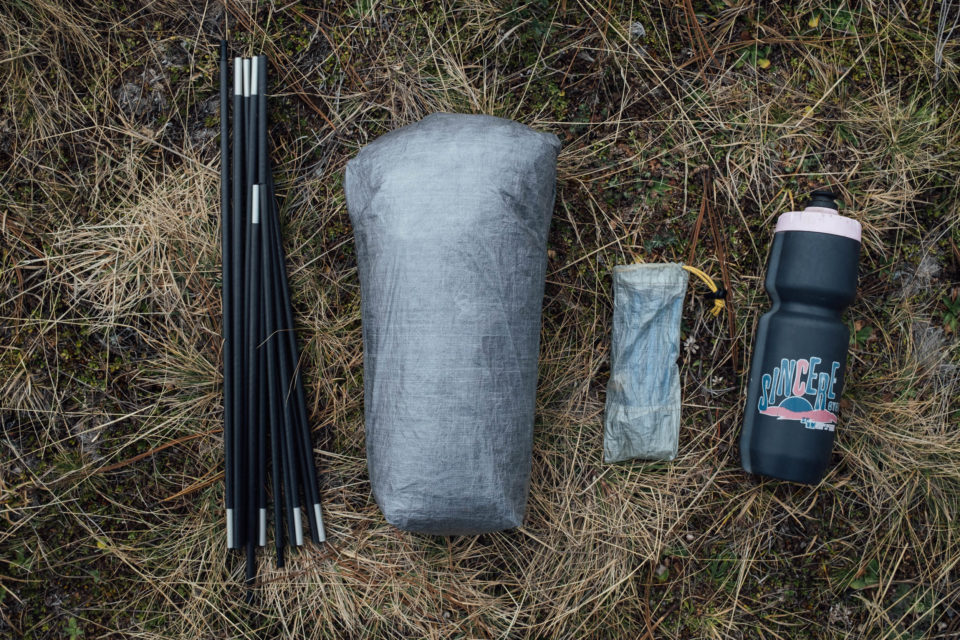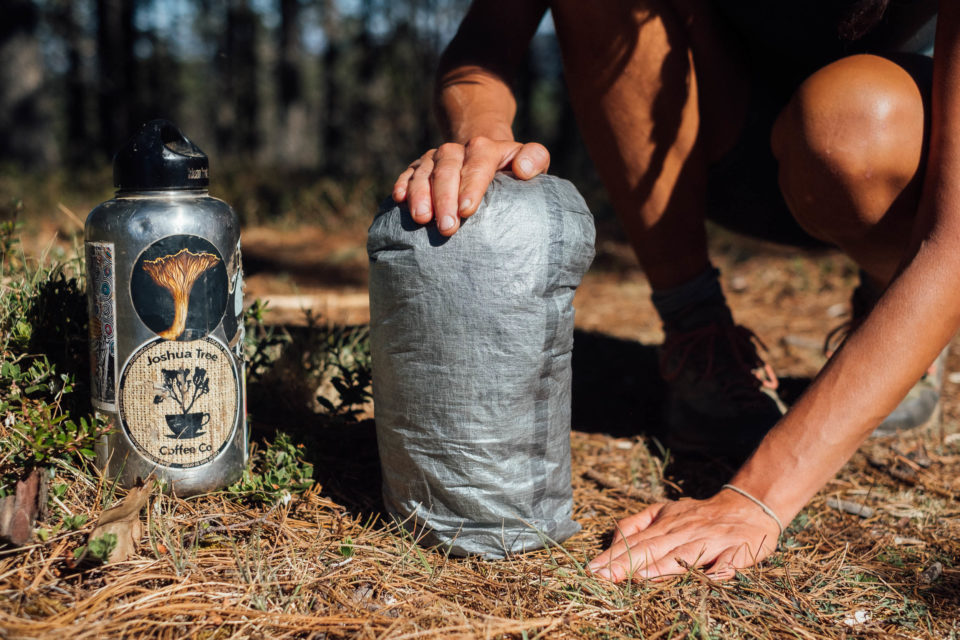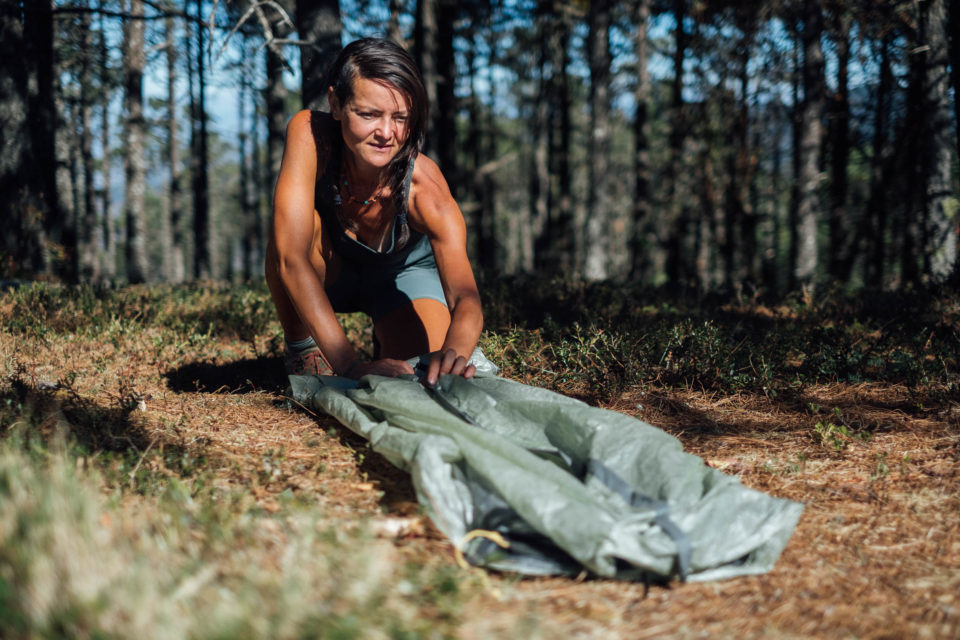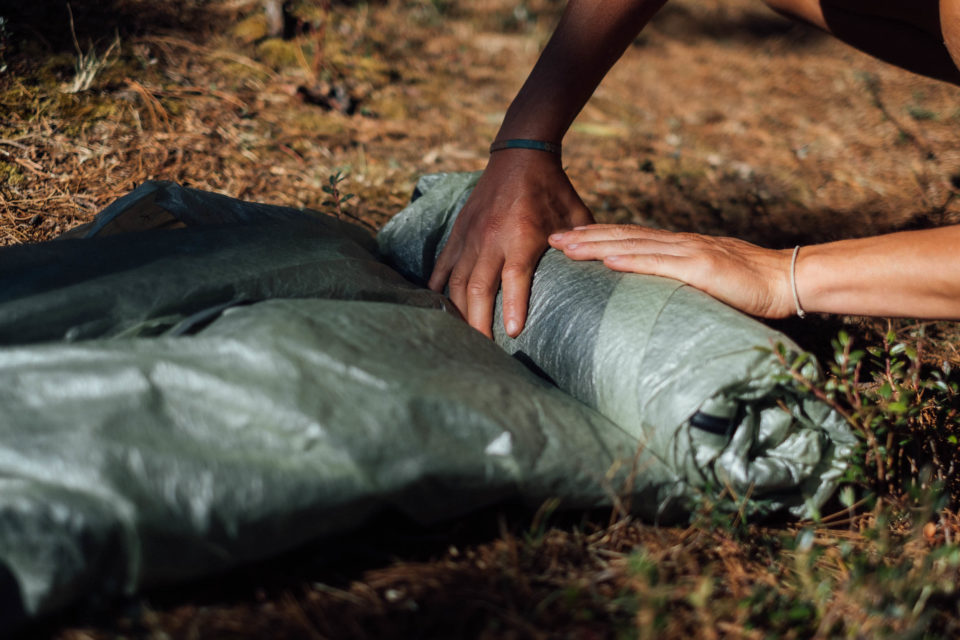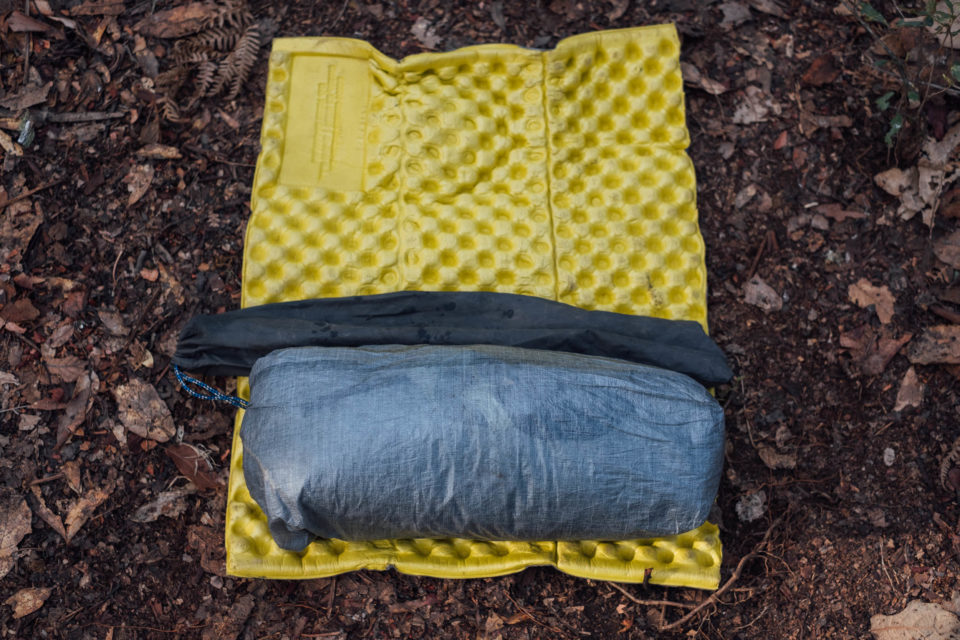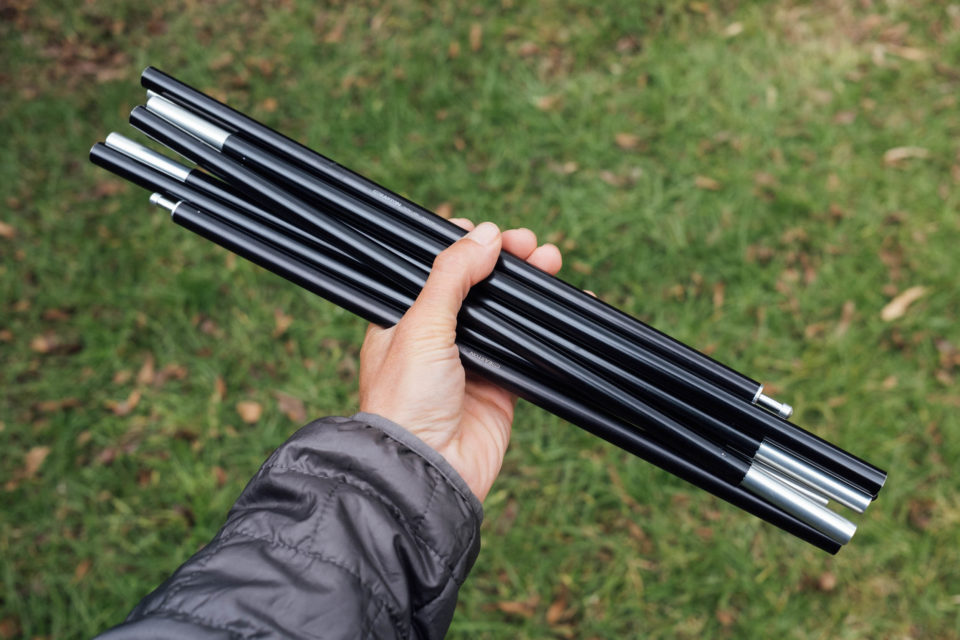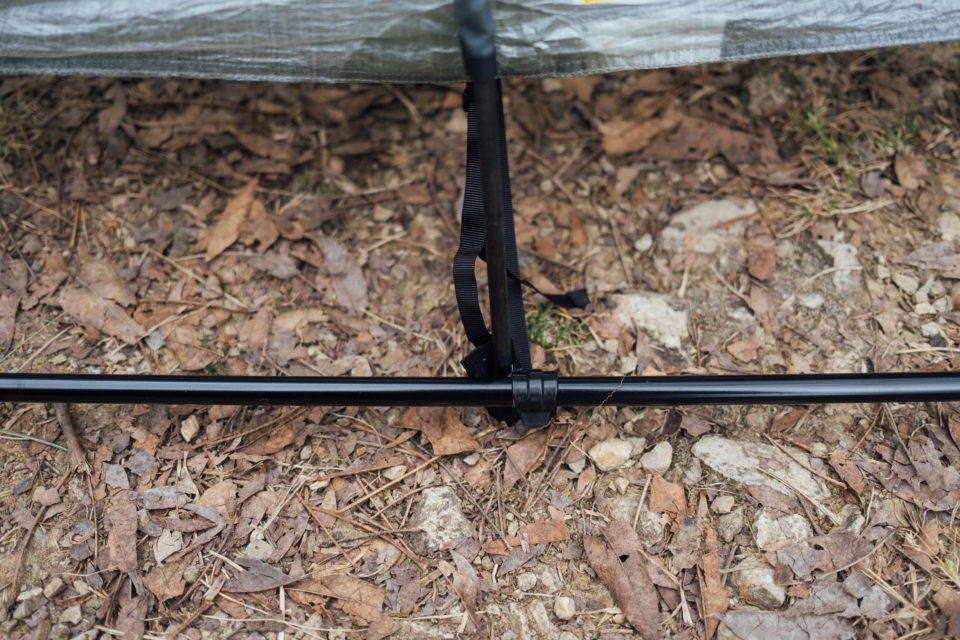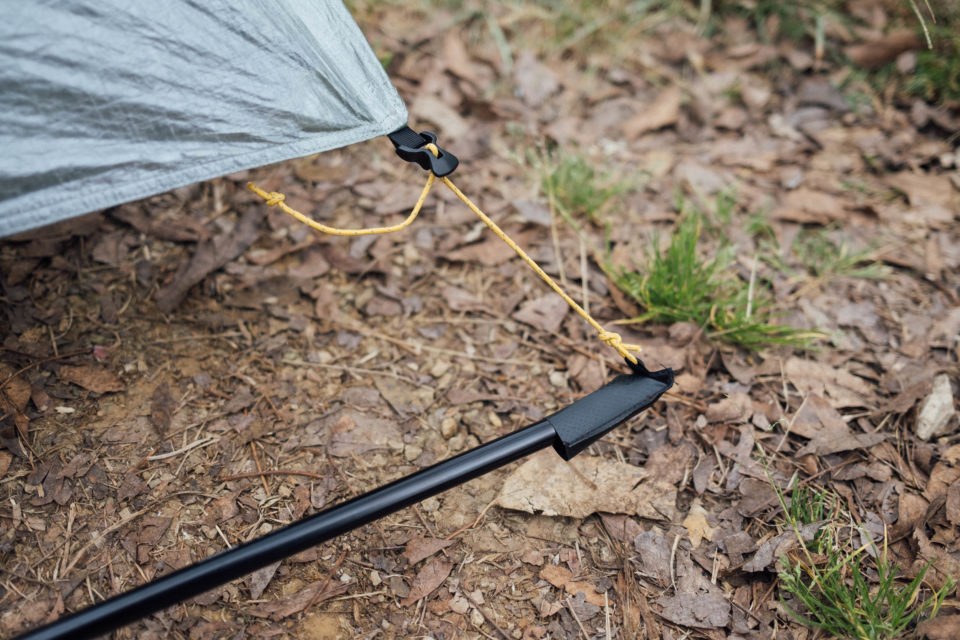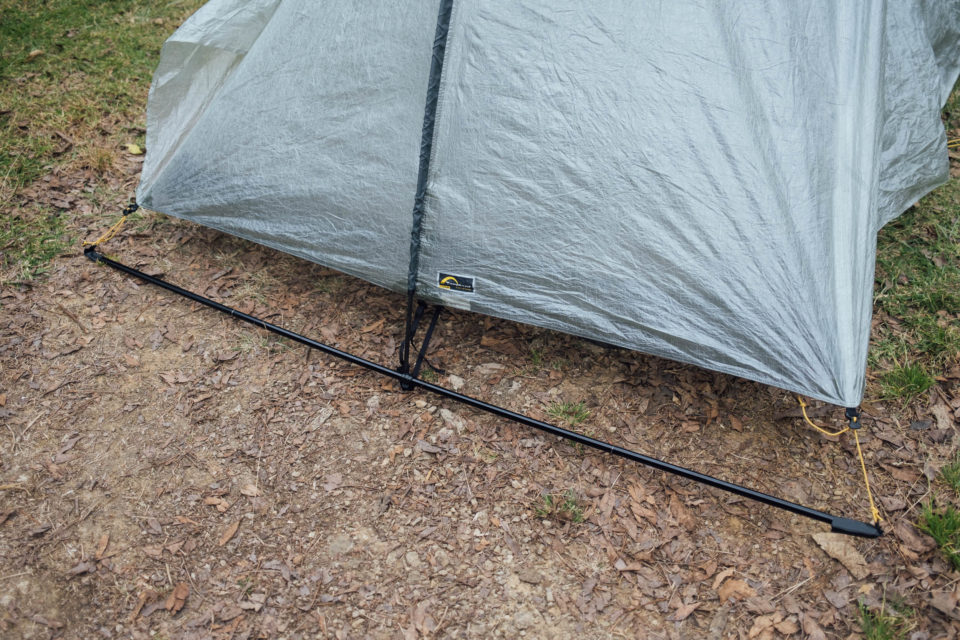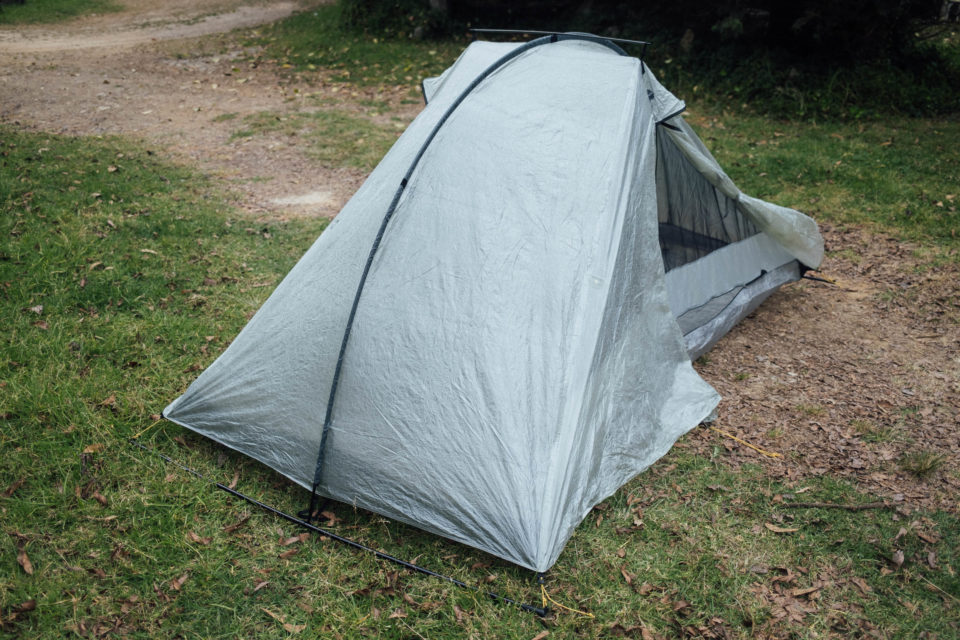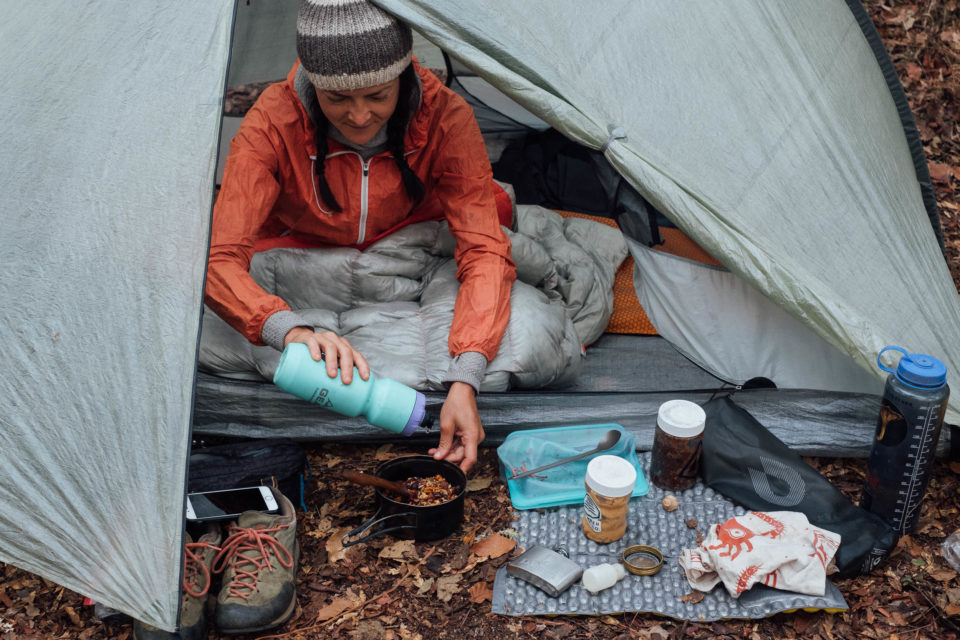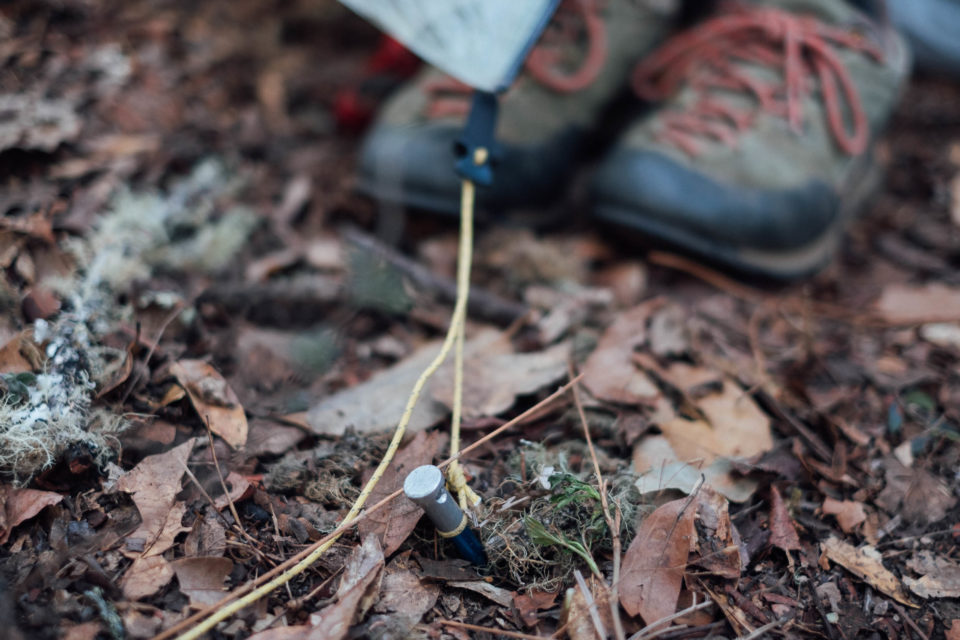Tarptent Double Rainbow Li Review: 765g + Space to Stretch
Tarptent’s Double Rainbow has been a longstanding, affordable favourite amongst the hiking and bikepacking communities. We tested out the new, ultralight Dyneema version – the Double Rainbow Lithium – in a bid to find out if a tent that’s over twice the price is worth all those extra dollars…
PUBLISHED Apr 16, 2021
Dig back into the camping gear archives and you’ll see that I reviewed the silnylon version of Tarptent’s Double Rainbow back in 2019. A longstanding favourite with ultralight hikers and bikers alike, it’s a tent that’s incredibly roomy and packs down surprisingly small. At just 1.2kg, it’s light too, especially for the price.
But for those to whom the Double Rainbow formula appeals, there’s now an option to go lighter still. Enter the Double Rainbow Lithium, which shares almost the exact same blueprint as the original – a double vestibule, single-wall design, with an integrated, bug-proof mesh liner – but is less than two-thirds of the weight, thanks largely to the use of Dyneema fabric.
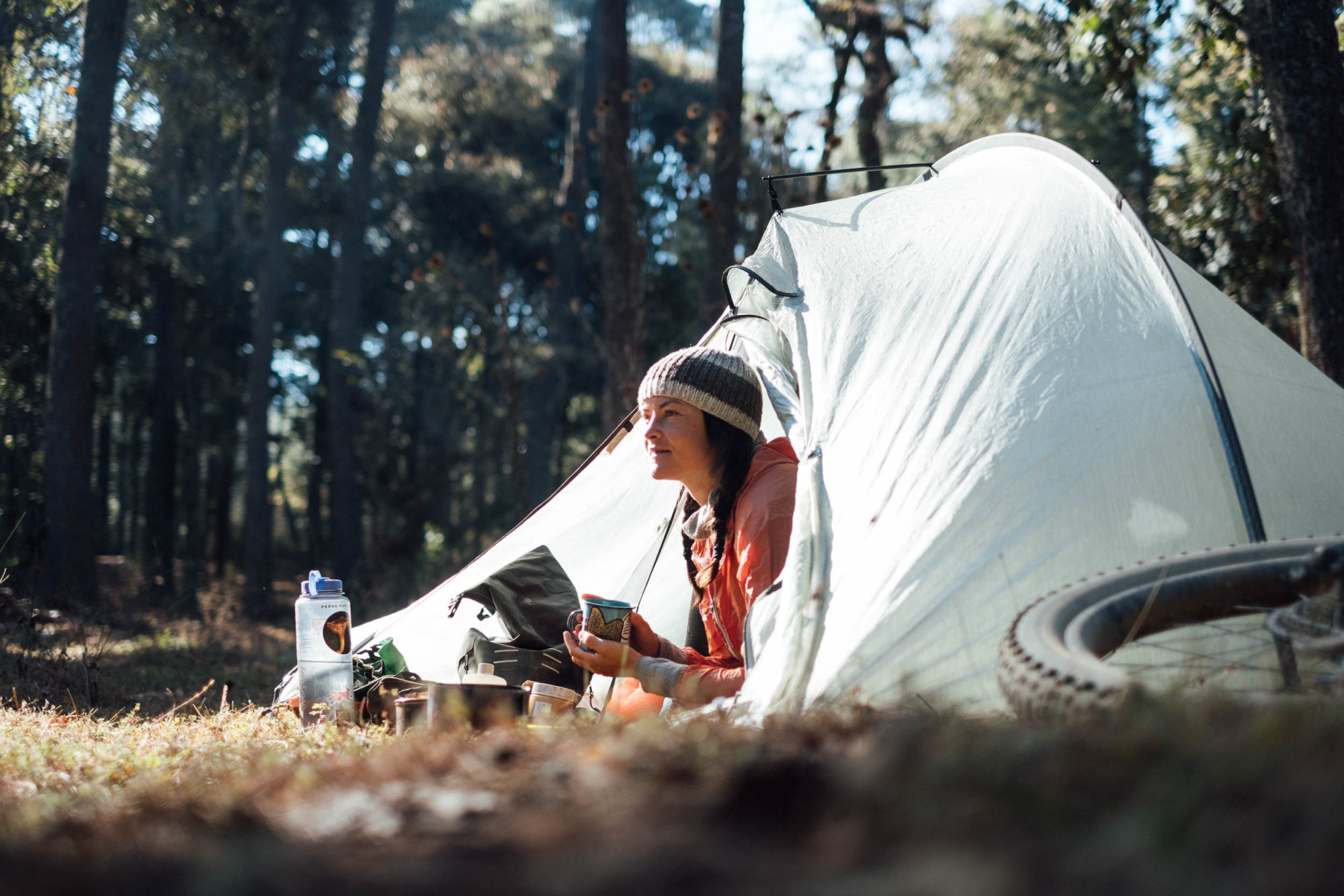
As it’s not often that we can compare the same tent design in different materials, let’s start by going over the main differences between the two models before digging into the review itself.
Double Rainbow Li vs. Double Rainbow
- Approximately a third lighter, 765 grams/27 oz compared to 1190 grams/42 oz
- Supplied with carbon Easton arch pole and carbon cross strut
- YKK Aquaguard zippers
- 8,000mm+ hydrostatic head pressure rating (compared to 5,000mm+)
- Magnetic ties for holding back the fly and inner
- Partial solid sidewalls on the interior doors
- No additional seam-sealing necessary
- Dyneema doesn’t wet out like silnylon
- Over twice the price; upwards of $649, compared to $300
- Less durable; Dyneema needs to be rolled rather than stuffed
Quick pitch
Like the original Double Rainbow, the Lithium is a pleasure to pitch, taking a few minutes at most. Run the arch pole through the sleeve, then insert the pole tips into the pole pockets. Fit the cross strut, stake out each of its four corners, then the two porches, and tension the corners as needed. Another perk of the Double Rainbow – and similar single-wall designs – is that the inside of the tent stays dry if you’re unfortunate enough to be pitching it in the rain.
Downsides? Single-wall tents aren’t ideal for stargazing on Baja beaches, though the Double Rainbow’s expansive double door design does go some ways towards making up for this. Similarly, this isn’t a tent that’s easily pitched on a platform or concrete floor, without the additional – and somewhat bulky – pole set (see Extra Options below).
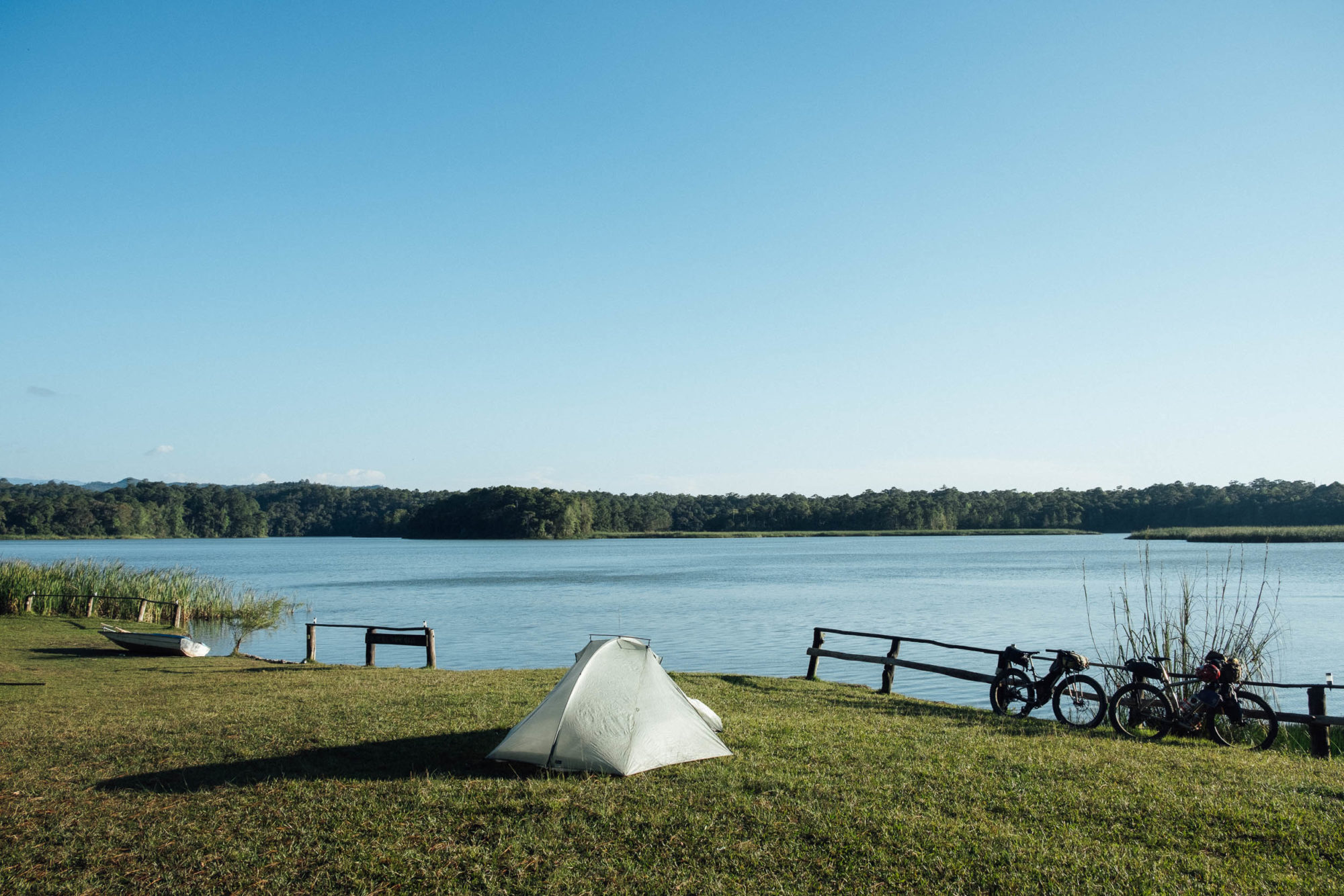
US Dyneema + Overseas Construction
MUSA enthusiasts will likely be disappointed to learn that an increasing proportion of Tarptents production has moved from Seattle to overseas – even if, somewhat ironically, Dyneema is a US-made material. For what it’s worth, all Tarptents are still designed, hand-checked, tested, and approved in the US – but only seven models from an extensive lineup are now sewn there. I asked founder Henry Shires to share the reasoning behind this to-ing and fro-ing across the globe and have included his reply in full:
“The sad truth is we can no longer make everything in Seattle due to the catastrophic human resource suck known as Amazon. Our capacity there is down well over 50% in the last 3 years because Amazon is hiring anything and everything that moves. Many, many other smaller Seattle area companies have suffered for the same reason. About 2 years ago we started looking for another manufacturing facility and in late 2019 started moving some production to a really high-end facility run by a Hong Kong company. Fortunately, it was just in time and we had real production ongoing just as the pandemic hit. Were it not for that preemptive move we would quite literally be out of business and your email would have bounced. The Hong Kong based company, with a big production facility just across the bay on mainland China, is state of the art and the production home to many high-end global brands. We feel fortunate to have found it and to have been accepted. All new products will be manufactured there. We will keep producing in Seattle but realistically the models will be limited to mostly the lowest selling ones given the now very small capacity.”
Build quality is indeed excellent, with precise stitching and taping throughout. My only concern is with the small, waterproof YKK zippers that are used on the fly, as there’s noticeable resistance when running them up and down. We added pulls with 1.18mm microcord, which really helped, and we made sure we held the opposite end of the zipper at the same time, evening out the tension. I’ve never found waterproof zippers to be especially long lasting, so I expect it’s worth giving them a regular clean, especially in dusty conditions, to extend their lives.
On the subject of wear and tear, how does Dyneema’s hold up compared to silnylon? Again, from Henty Shires: “In our experience and lots of other anecdotal reports, Dyneema has about 2/3 the lifespan of silnylon. The laminate nature of Dyneema makes it more susceptible to breakdown caused by hard creasing. For that reason, do what you can to roll it gently and never, ever stuff it.”
Tarptent uses a fly weight that is 0.51 oz/sq yd and a floor weight of 1 oz/sq yd. The company claims their Dyneema floors are tough enough not to require a separate groundsheet, unless you’re camping regularly on rocky ground or in desert conditions – in which case you can buy an optional Tyvek one for $20 (193g/6.8oz). With well over 30 nights of use, there are no cuts to report yet. However, I would note that whilst the lighter weight flysheet has also fared perfectly well during the last few months, it has discoloured slightly and it is extremely thin, doing little to filter out ambient light – be it a full moon or artificial lights at a campsite. Certainly, the Double Rainbow Li feels a lot brighter than the silnylon version, so if you’re a sensitive sleeper, a sleep mask may be useful on occasion. Some Dyneema tents have a green dye, which could help.
Magnetic Details
As with other Tarptents I’ve tried, mod cons to be somewhat on the minimal side: this is no Big Agnes style tent with internal lighting, upper stowage lofts, and headphone ports. In fact, there are just two small side pockets that are big enough to fit a phone and a headtorch, or a small speaker, as pictured. There are also two porches. Whilst they’re not roomy enough to cook in – and watch out anyway, because Dyneema has a lower melting point – there’s plenty of space to stow shoes, a helmet, a seat pack, and more, leaving more space inside.
The Double Rainbow Li’s outer doors can be rolled away to each side, promising both grand morning views and increased ventilation on a warm summer’s evening. My favourite detail? The nifty magnetic ties that hold them in place. I have no issues to report in heavy weather, either. Internal clips at either end of the tent hoist the bathtub floor during storms, though I did notice that it’s important to ensure the tent is correctly tensioned so rain doesn’t run off the fly and drip inwards.
In other details, both the main pole and the cross strut are made from Easton 3.9 carbon. It’s a shame, however, that the Double Rainbow Li doesn’t include a pole sleeve to protect the carbon poles from scratches and the Dyneema from abrasive scuffs. Tarptent do offer an optional PolePouch which you can attach to your downtube, but it’s a lot bulkier than a Dyneema one would be. On the plus side, whilst I’ve complained in the past about the hollow Easton Aluminum Nano Stakes seen across the range – largely because I’ve found them susceptible to ‘folding’ rather than simply bending – I haven’t had any issues this time around. I’ve taken care not to use my shoes to press them in and plan to add micro cord loops so they’re easier to remove. The Double Rainbow Li came with a few extra Dyneema patches too – here’s a tutorial on how to use them – and Tarptent is happy to send out further tape if needed. Replacement poles are available too and if anything major needs attending to, they provide a more formal repair service at their Nevada City HQ.
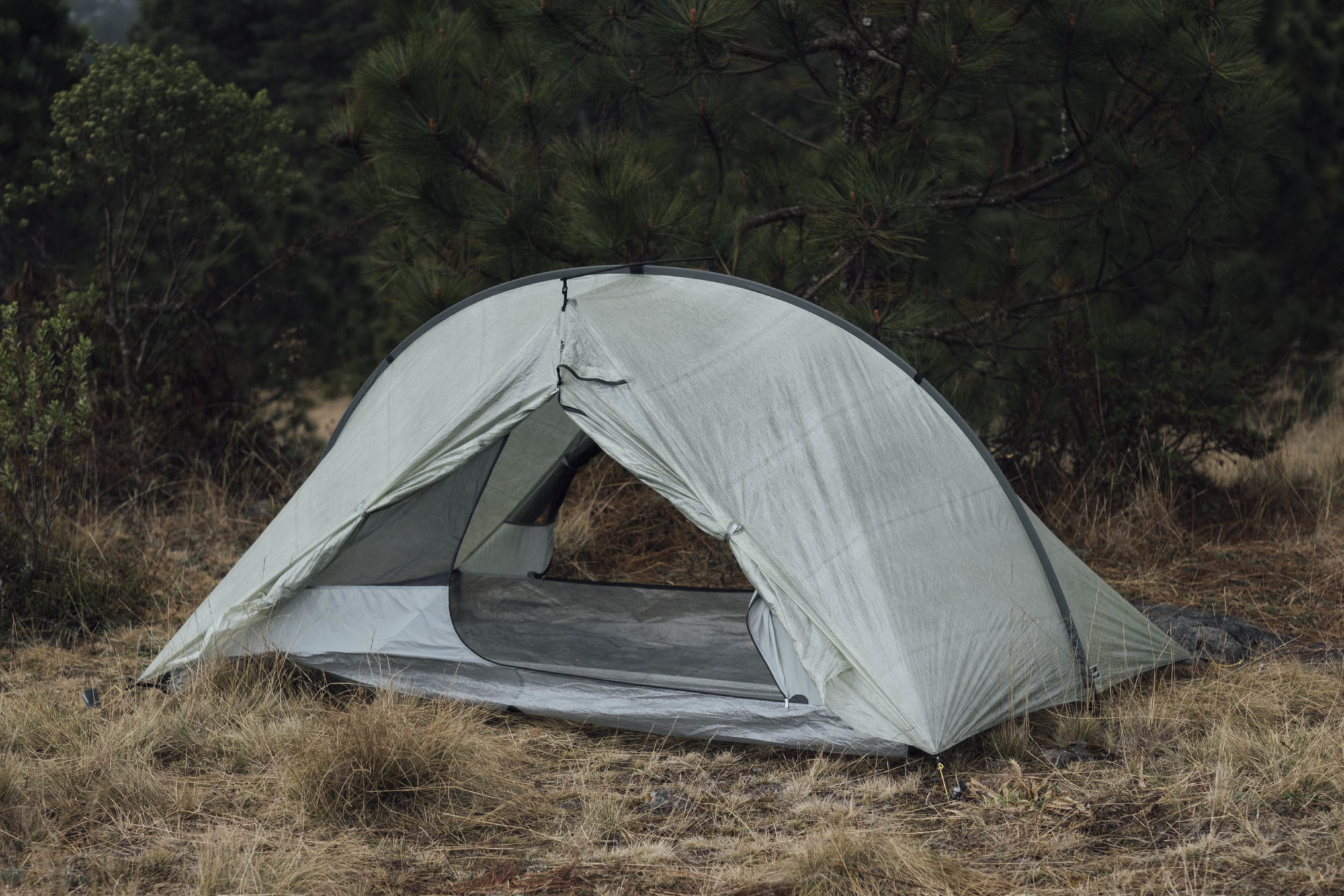
In terms of weather conditions, the Double Rainbow Lithium is designed for 3+ season use. Given the largely mesh paneling, this isn’t a tent that’s intended for mid-winter camping, though it can handle light snow loading. We pitched it in relatively high winds and slept soundly; if a big storm is brewing, there’s the option of deploying additional guy lines along the arch sleeve, though these aren’t supplied. Dyneema handles high winds well and in my experience, it’s less prone to flapping noisily than silnylon.
Livability
It’s here that the Double Rainbow Li scores particularly well, making it a great option for an extended trip. It’s a really roomy tent, with a shape that’s lofty at its centre point and rises up steeply at the ends, making its space especially usable. Its interior height is 102 cm (40in) in the middle, while the floor is a very generous 127cm (50in) wide and a whole 224cm long (88in). If you’re familiar with the first generation of this tent, note that the newer (post 2019) Double Rainbows have a 33% wider apex and an extra 5cm width.
It is, however, worth pointing out that single-wall tents are invariably subject to condensation. There are vents at the top of the tent and you can unclip the bathtub floor for extra air circulation. Still, like all single-wall tents I’ve tried, you’ll need to be mindful not to press up against the sides of the tent, or let your sleeping bag touch the ends, as they’re likely to be damp in the morning. Luckily the tent is commodious enough that it’s rarely a real issue, unless you’re pitched on a slope and find yourself sliding down during the night. By way of example, I’m 185.5cm (6’1″) and I can sit up bolt upright in the middle of the tent and there’s no chance of me touching the ceiling, even on a thick pad – which my back also appreciates at the end of a day in the saddle. There’s also plenty of room to spare in both directions when I lie down. Anyone up to 190.5cm (6’3”) won’t have any issues either – and likely taller too, depending on the height of your sleeping pad.

However, when condensation does strike – which we really noticed while camping beside a lake – it can be awkward to open the doors and roll them away in the morning without water dripping inside. If I found myself touring in areas of high humidity, I’d likely fashion clips to secure the doors to the pole sleeve pullout, so they could be kept out of the way whilst drying. At least Dyneema doesn’t ‘wet out’ like silnylon. Not only does this mean that the tent doesn’t sag during the night, it’s also quicker to dry when it’s windy or the sun is out.
Packability
Both the arch pole and the cross strut are easily removed, leaving just the main fabric of the tent to pack away. As noted above, Dynemma should be rolled, rather than stuffed or folded – thankfully the Dyneema storage bag supplied is wide enough for this to be done easily. I’ve noticed that silnylon tends to pack down more compactly than Dyneema, though the latter does appear to compress slightly over time.
I either stowed the tent in a truss fork bag, or on a G-Funk Handlebar Strap Deck – in which case I wrap it in my cut-down Therm-a-Rest Z-Lite to make sure there was no risk of abrasion from brake levers, cables, or my shifter. Pole segments are a maximum of 43cm (17in) in length and either fit into my framebag or were strapped with the tent below my handlebars, in a pole sleeve I already owned.
Value for money?
When it comes to Dyneema tents and tarps, value for money is always going to be a hard sell, simply because the raw materials are so very expensive. The Double Rainbow is never going to be a ‘bang for your buck’ style tent – there are plenty of far less costly options that almost do the same thing, including the silnylon version of the tent. This doesn’t mean it’s not reasonable value when compared to other Dyneema tents – by way of example, the Dyneema Zpacks Duplex Tent is $750 (as tested), Big Agnes’ Fly Creek HGV2 Carbon is $850, and Zpacks’s Free Duo – that Logan recently reviewed – is $699, albeit it’s made in the US. Simply pit, there’s no getting around the fact that you’re paying a big premium for a Dyneema tent.
Extra options
Tarptent offers a number of accessories for the Double Rainbow and Double Rainbow Li. Whilst these invariably do also add weight and bulk, their modularity means you only have to carry them when they’re required. I tried the freestanding conversion kit, which either requires the use of two trekking poles or (more pertinent to bikepacking) two additional tent poles ($16/135g/4.75oz each). Whilst it certainly works, I’d advise those who prefer their tents to be freestanding to look elsewhere, as the poles add more bulk and complexity than is probably worth it.
Of more interest, I think, is the clip-in condensation liner ($30/71g/2.5oz), intended for cool, damp conditions or anywhere where condensation is unavoidable. Although I didn’t try one, I can see the liner being a very useful addition on specific trips. Lastly, there are also two extra flaps that unroll from the porch doors, creating a small awning. This is designed to work best with trekking poles so again, is only really suited to hikers.
Pros
- Extremely spacious interior for such an ultralight two-person tent
- Especially well suited to tall folks, right up to 6’5″ if solo camping
- Dyneema doesn’t wet out so no sagging overnight – and it’s very quick to dry too
- The choice of heavier duty Dyneema means no groundsheet is necessary
- High hydrostatic head rating and good quality taped seams means this tent is very waterproof
- Quick and easy to pitch
- Fully enclosed, so perfect for buggy environments
- All-in-one pitch keeps everything dry when setting up camp in the rain
- Modular design – add in an extra lining for wintery temperatures, or very humid/wet environments
- Handles high winds well and moderate snow loading too
Cons
- Dyneema is inherently very expensive
- Dyneema isn’t as hardwearing as silnylon – needs more TLC
- The fly is relatively see through, and does little to diffuse bright lights
- Prone to condensation in humid environments, as with all single-wall tents
- If it’s raining heavily, hard to avoid rain getting in when exiting or entering the tent
- Needs care when pitching to avoid water dripping inside during heavy storms
- Requires trekking poles or additional (and bulky) pole set to be freestanding
- Fairly bare bones; just two small side pockets for internal storage
- Pole sleeve and extra guy lines aren’t included
- Limited star gazing potential in single-wall tents (though the doors do open very wide)
- Capacity: Two-person
- Material: Dyneema Composite
- Weight: 765 grams (27 oz)
- Place of Manufacture: China
- Price: $649 USD
- Manufacturer’s Details: TarpTent.com
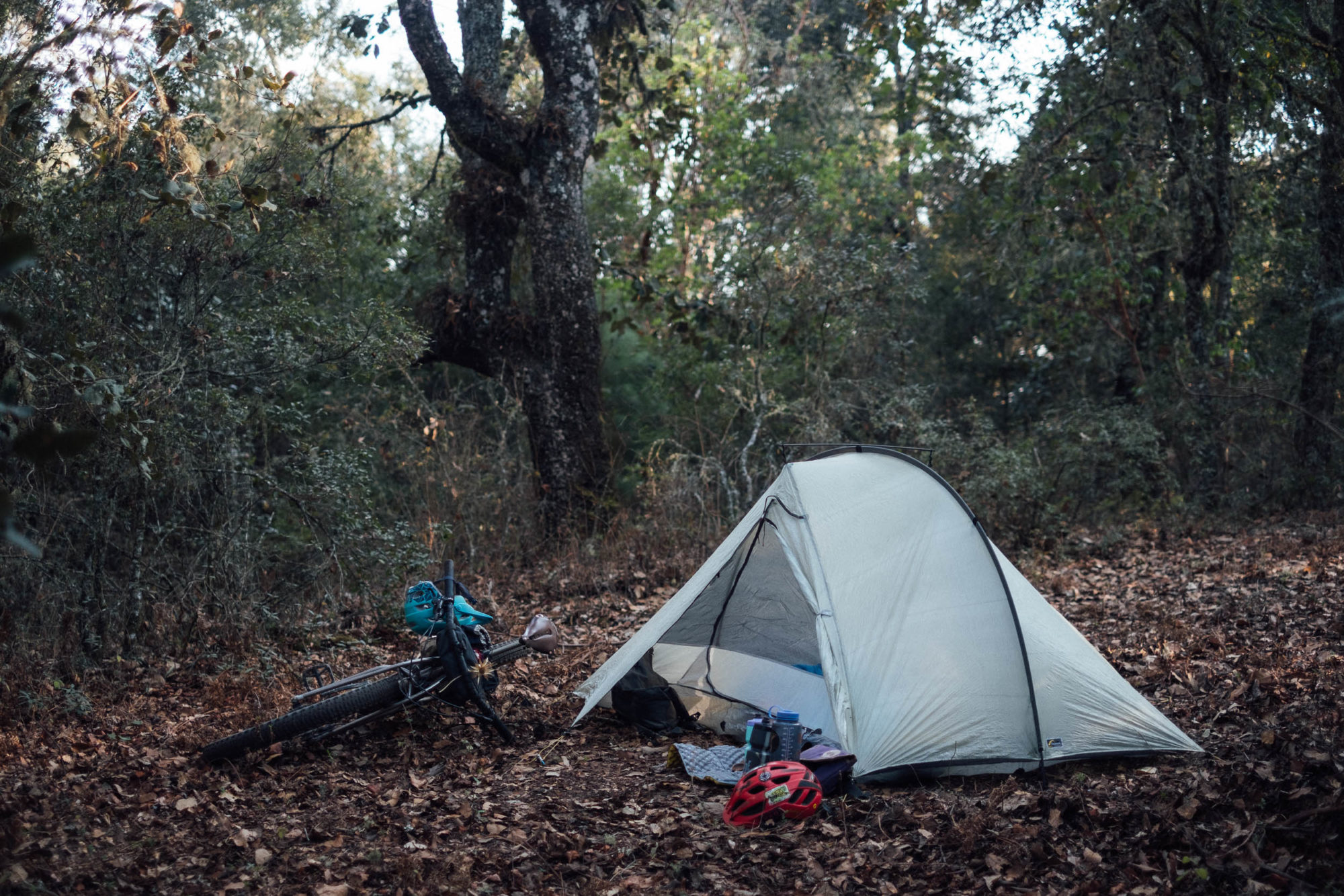
Wrap Up
As a fan of the original Double Rainbow, it’s perhaps no surprise that I really like its Dyneema sibling too. The Double Rainbow Li is spacious enough to house two tall adults in complete comfort, yet with its 425g weight saving, it’s so ridiculously light that I have no hesitation in reaching for it on a solo trip too. This effectively rules out the need for owning two tents.
Dyneema does, however, come with a hefty price tag, along with the understanding that despite this extra cost, it’s not as hard-wearing as its silnylon counterpart – particularly if you neglect to take proper care of it. I also found the translucent quality of the material a disadvantage in formal campgrounds with ambient lighting.
Still, the overall Double Rainbow design is pretty much spot-on for 3+ season use, especially in buggy climates. I love how quick it is to pitch, its generous headroom, the expansive views that its double doors afford, and the practicality of having two vestibules. As with all single-wall tents, the most noticeable downside is the likelihood of condensation on the inside of the tent when the humidity is high. But even then, its shape, height, and length are such that you’re unlikely to touch any damp material – if it’s windy, the optional clip-in condensation liner takes care of errant droplets. Just note that from a bikepacker’s perspective, the Double Rainbow’s not a very viable freestanding option as it requires the addition of bulky poles – whilst rarely an issue for me, this might prove divisive to some.
If you’re ok with these caveats and value its minimal weight and capacious interior, then I can’t imagine a two-person tent that’s as well-rounded. And if $649 seems like an unnecessary amount of money to commune with nature, then I can recommend the silnylon Double Rainbow just as highly. In fact, it’s arguably the better option for an extended trip, given silnylon’s inherent durability.
Nov 2021 Update: This has been the only tent I’ve used for the past year, and it’s continuing to hold up well. There are a couple of small holes in one of the mesh panels to report, and a very small cut in the floor, but nothing that wasn’t easily repaired with the provided Dyneema patch kit. Somehow, the stuff sack developed a larger cut but again, it was easily fixed with some gorilla tape.
Please keep the conversation civil, constructive, and inclusive, or your comment will be removed.






